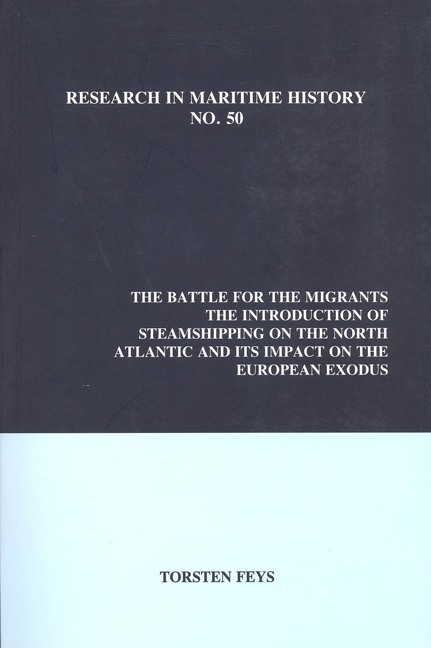 The Battle for the Migrants
The Battle for the Migrants Introduction
Summary
Why do we need another study on European mass migration to the United States during the long nineteenth century at a time when many historians are encouraging a shift away from an Atlantic and modern focus that has long dominated the sub-discipline? The answer is that we need such a study because one recurring question remains unanswered: how did the migrant trade evolve with the introduction of steamships and influence the relocation of approximately thirty-five million people across the North Atlantic during the long nineteenth century? More than half a century ago, Maldwyn Jones, Frank Thistlewaite and Rolf Engelsing drew attention to the fact that transatlantic migration was determined by trade routes. On the North Atlantic, migrants became a very valuable cargo because previously ships sailing from Europe to the United States had travelled westbound in ballast. Rolf Engelsing documented how the maritime business community responded to this opportunity by erecting inland networks, directing a continuous flow of human cargo to the port of Bremen during the sailing ship era. Marianne Wokeck later stressed the Atlantic dimensions of these networks by dating the origins of non-colonial mass migrations to the eighteenth century. Yet a comprehensive analysis of the further.development of the trade during the steamship era is still lacking. This explains why migration historians, such as Dudley Baines, or maritime historians, as Michael Miller, have observed that: “we know very little about the activities of shipping companies and shipping agents” and that “oddly enough, migration historians and maritime historians have often written about transoceanic crossings like two ships passing in the night.” As Miller has pointed out, maritime historians have also failed to pick up on the early observations of Robert Albion and Engelsing regarding the influence of human cargoes on port activities. Despite the pioneering role of the North Atlantic passenger business in introducing both technological and organizational innovations to the shipping industry, few maritime historians have broached the topic. Indeed, even the exceptions to this generalization, including Robin Bastin, Francis Hyde and Birgit Ottmiiller-Wetzel, have limited their analysis to a single port or company.
- Type
- Chapter
- Information
- The Battle for the MigrantsThe Introduction Of Steamshipping On The North Atlantic And Its Impact On The European Exodus, pp. 1 - 10Publisher: Liverpool University PressPrint publication year: 2012


